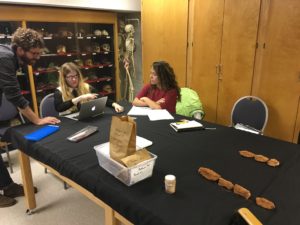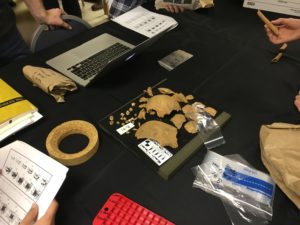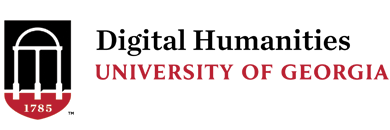Curating the Baldwin Hall Excavation
Anthropology Professor Laurie Reitsema and her Human Osteology class took on a critical project for the campus community in their work on the Jackson Street cemetery and the Baldwin Hall excavation.
In 2015, human remains were found during the construction of the Baldwin Hall expansion project. Work was halted while experts including Southeastern Archaeological Services, and members of the Anthropology department, including Reitsema and several of her graduate students meticulously recorded the location of the remains, likely bodies originally buried in a forgotten section of the Old Athens Cemetery, excavated the individual bones, and removed them safely from the dig site.

In preparation for the bones’ reburial in 2017, Reitsema and her Human Osteology class analyzed and catalogued the remains. This work requires careful attention; from documenting the original location of the remains to sorting through dust, rocks, and wood to extract every possible piece of material and finally photographing all of the co-located remains.

The class examined the materials in three groups looking for evidence that might tell us more about the lives these people might have lived. They looked for signs of disease and infection, information regarding diet and nutrition, and their activity patterns as evidenced in stress on the bones themselves. The amount of information one can glean from bones alone is astounding. Evidence of everything from abscessed teeth, to injury, to syphilis can be seen in these fragments. Using comparison data sets the students were also able to make basic conjectures on what types of work these Athenians might have done based on the stress to the long bones of the legs and arms.

For the students this project provided an invaluable opportunity to do fieldwork in their own backyard. As Anthropology graduate student Rachel Horton explained, “The importance of this work is that these bones represent a lived experience lost to history. We are helping to bring that history to life.”
Reitsema’s class has worked closely with teams of experts and their findings will be combined with ongoing research including DNA testing. All of these findings will be released together as the additional research is completed.
Once complete, this work will join our “Death and Human History in Athens” Digital Humanities project that now includes student investigations of local Athens cemeteries from five classes at the University of Georgia. This project is ongoing and we will continue to add information as it is available.
